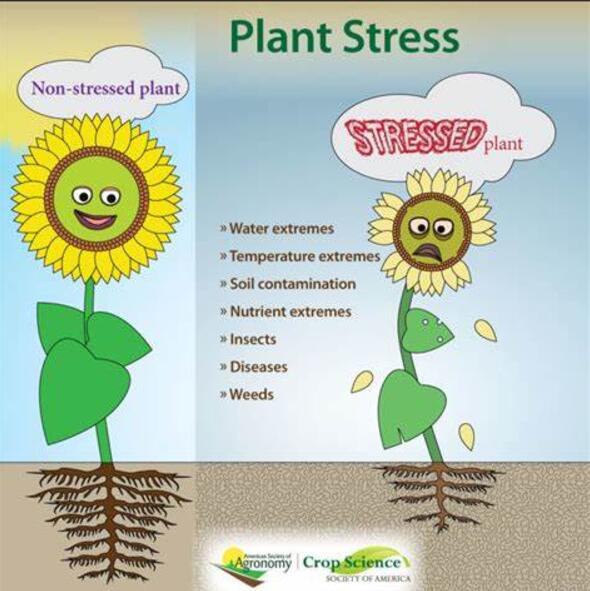RNA-Seq-based analysis of transcriptomic signatures elicited by mutations conferring salt tolerance in Cucurbita pepo
IF 6.8
Q1 PLANT SCIENCES
引用次数: 0
Abstract
Salinity is a major determinant of plant growth and crop productivity, resulting in significant economic losses in agriculture. Improving salinity tolerance in plant breeding programs requires not only donor tolerant genotypes but also a thorough knowledge of the genes controlling the trait. Taking advantage of two recently identified salinity-tolerant EMS mutants of squash (sal-1 and sal-2), this study aimed to analyse whether these two sources of salt tolerance are associated with similar transcriptomic changes in leaves. RNA sequencing revealed that the two mutants have a very distinct transcriptomic response to salt stress compared to the WT, with 154 and 1068 salt-tolerance-associated differentially expressed genes (DEGs) in sal-1 and sal-2, respectively. GO and KEGG enrichment analyses revealed the importance of several phytohormone biosynthesis, signalling and transport genes (CpAUX22B/22D, CpSAUR32–2, CpARR5/12, CpAHK2/3, CpBZR1, CpTCH4, CpNCED1, CpCYP707A1, CpPP2C, CpSnRK1/2, CpLOX2 and CpACX) in the salt tolerance response. MAPK genes (CpMPK3 and CpMEKK1) and the Ca²⁺ signalling network (CpCPK26/28/34, CpCML31/36/48, CpPBP1, CpCBL1 and CpRBOHD) were also specifically activated in salt-tolerant mutants, indicating their contribution to salt tolerance. Genes for antioxidant enzymes (PP2, POD, CAT, PRX, GST and GRX) and cell wall metabolism were also up-regulated in salt-tolerant mutants, reducing oxidative stress and maintaining the integrity of membranes and other cellular structures. Genes for ion transporters were significantly up-regulated in response to salt stress in sal-2, probably involved in maintaining ion homeostasis. Several genes encoding transcription factors of the ERF, C3H, Dof, HD-ZIP, MYB, HSF, NAC, knotted and WRKY families, as well as long non-coding RNA, were also found to positively or negatively regulate salt stress tolerance in the sal-1 and sal-2 mutants. Overall, the results highlight the complexity of the molecular response involved in salt stress tolerance in C. pepo and prioritise further investigation of specific genes that contribute to the resilience of crops under saline conditions.
求助全文
约1分钟内获得全文
求助全文
来源期刊

Plant Stress
PLANT SCIENCES-
CiteScore
5.20
自引率
8.00%
发文量
76
审稿时长
63 days
期刊介绍:
The journal Plant Stress deals with plant (or other photoautotrophs, such as algae, cyanobacteria and lichens) responses to abiotic and biotic stress factors that can result in limited growth and productivity. Such responses can be analyzed and described at a physiological, biochemical and molecular level. Experimental approaches/technologies aiming to improve growth and productivity with a potential for downstream validation under stress conditions will also be considered. Both fundamental and applied research manuscripts are welcome, provided that clear mechanistic hypotheses are made and descriptive approaches are avoided. In addition, high-quality review articles will also be considered, provided they follow a critical approach and stimulate thought for future research avenues.
Plant Stress welcomes high-quality manuscripts related (but not limited) to interactions between plants and:
Lack of water (drought) and excess (flooding),
Salinity stress,
Elevated temperature and/or low temperature (chilling and freezing),
Hypoxia and/or anoxia,
Mineral nutrient excess and/or deficiency,
Heavy metals and/or metalloids,
Plant priming (chemical, biological, physiological, nanomaterial, biostimulant) approaches for improved stress protection,
Viral, phytoplasma, bacterial and fungal plant-pathogen interactions.
The journal welcomes basic and applied research articles, as well as review articles and short communications. All submitted manuscripts will be subject to a thorough peer-reviewing process.
 求助内容:
求助内容: 应助结果提醒方式:
应助结果提醒方式:


